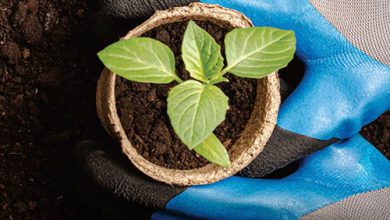BREWING BATTLE

The tea export industry faces pressing challenges that threaten its sustainability. Huzefa Akbarally acknowledges that production has witnessed a marked decline over the past decade. In 2013, the country produced 340 million kilogrammes of tea and by 2022, it dropped to 252 million kilogrammes and then recovered slightly to 262 million kilogrammes in 2024.
Akbarally attributes this decline to a series of policy decisions – including the 2015 ban on glyphosate weedicide and the 2021 prohibition of chemical fertiliser.
“Since 75 percent of tea production comes from 480,000 tea smallholder farmers, it is necessary to support them to increase crops. Subsidised fertiliser is a must-have with proper education on infillings and good agricultural practices,” he notes.
Export volumes have also suffered, falling from 320 million kilogrammes in 2014 to 245 million kilogrammes in 2024. Though revenue improved from US$ 1.2 billion in 2022 to 1.4 billion dollars last year due to value additions, Akbarally stresses the need for stronger financial and technical support for smallholders.
He advocates for subsidies on fertilisers, education in agricultural practices and an increase in the replanting subsidy from Rs. 500,000 to two million rupees a hectare to address rising costs. Extreme weather conditions are also adversely affecting production.
Additionally, policy decisions such as the proposed abolition of the Suspended VAT (SVAT) scheme from April could have dire consequences.
“The proposed abolition of SVAT will create cash flow issues for tea exporters; they will be compelled to borrow more money for weekly purchases of tea from auctions,” Akbarally explains, and urges the government to reconsider this decision.
“If we are to position Ceylon Tea as a premium product, its quality should be superior to other competitors”

Sri Lanka’s dependence on Middle Eastern markets, which account for 50 percent of tea exports, means that the industry is vulnerable to geopolitical instability. The Russia-Ukraine conflict has also disrupted trade, as Russia and the Commonwealth of Independent States (CIS) represent 20 percent of our annual volumes.
“Tea exporters are eagerly anticipating the lifting of sanctions on key tea importing countries to enable seamless trade and ensure the smooth receipt of export proceeds,” Akbarally emphasises.
FTAs with India and Pakistan have delivered limited benefits due to market preferences for cheaper teas from other countries. However, the proposed free trade agreement with China presents a promising opportunity, he says: “China’s growing market for premium teas aligns with our positioning of Ceylon Tea as a high quality product.”
Akbarally also calls for streamlining trade processes by introducing a single window system, and expediting the digitisation of Sri Lanka customs and port operations.
Sri Lanka’s share of global tea production has declined from 10 to five percent, and transformed Ceylon Tea into a niche product. Akbarally believes this shift is an opportunity to position it as a premium brand.
“If we are to position Ceylon Tea as a premium product, its quality should be superior to other competitors. The government and regulators must address the tea crop shortage and quality issues to enhance our position in the global market,” he urges.
Since 2010, tea exporters have contributed to a Tea Promotion Fund managed by the Sri Lanka Tea Board but restrictive government regulations have limited its impact.
Akbarally calls for more effective global campaigns to promote Ceylon Tea and greater support from Sri Lankan missions abroad to increase market visibility. There should also be a comprehensive approach to rejuvenating the tea industry.




